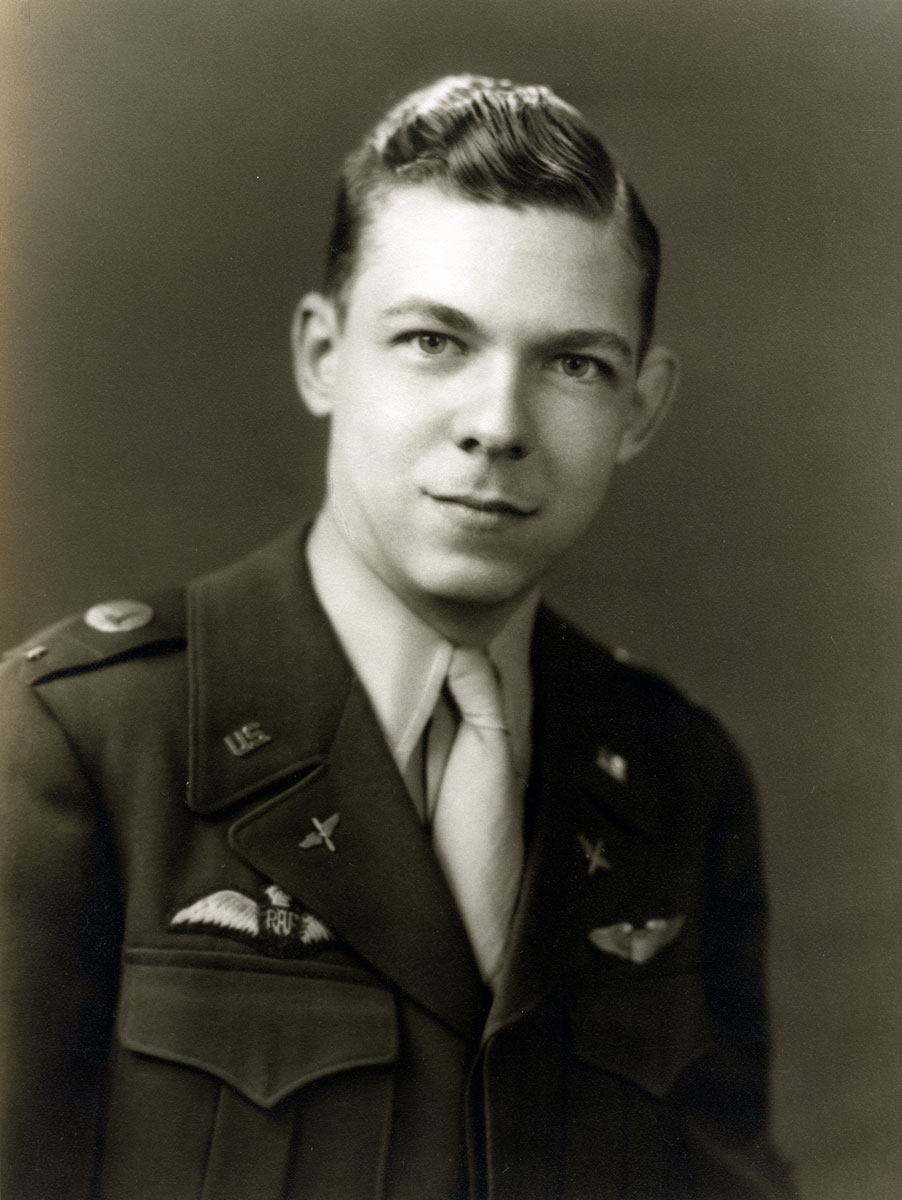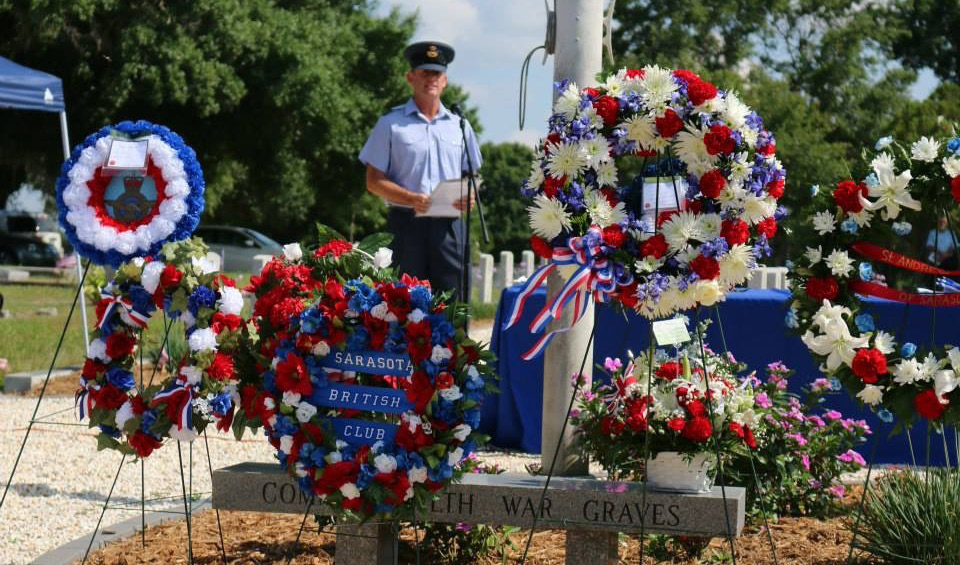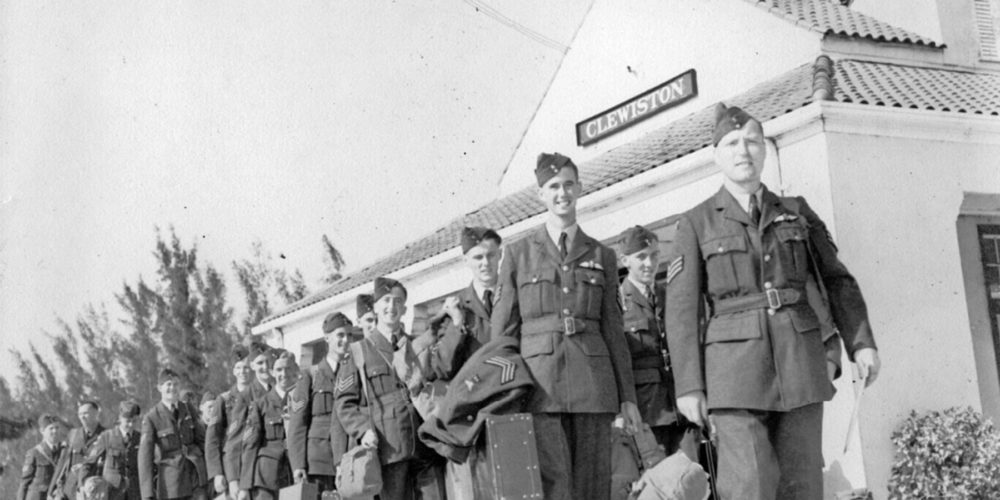A service held on Memorial Day each year in Arcadia, Fla., is especially significant for many early Embry-Riddle alumni and this Central Florida community. The service remembers the 23 British Royal Air Force (RAF) cadets who died during World War II at Embry-Riddle flight training facilities. But it’s also a reminder of a more patriotic era — and a time when nations came together to fight a common enemy.
The Arcadia Rotary Club has organized the event since 1946 at a special area of Oak Ridge Cemetery. The Union Jack flag flies here above gravestones for those cadets, as well as a stone for Embry-Riddle co-founder John Paul Riddle, who died in 1989. A portion of Riddle’s ashes are buried there to commemorate his deep affinity for the No. 5 British Flying Training School (BFTS) he established and the men who gave their lives to the war effort.
“Our club participates, the community participates. It’s a tradition,” says Judy Kirkpatrick, organizer of the Rotary Club memorial.
Embry-Riddle started training pilots in 1941 for the U.S. Army Air Corps (later the U.S. Army Air Forces) and the RAF at Carlstrom Field in Arcadia. As of September 1941, the training of RAF cadets moved to the newly constructed Riddle Field in Clewiston, Fla., and it became known as No. 5 BFTS.
At the time, the German Luftwaffe was hailing devastation on the island empire, making flight training too dangerous for the RAF on its home soil. As part of the Lend-Lease Act signed by President Franklin Roosevelt, No. 5 BFTS was one of seven different training facilities erected throughout the United States.
Resort Lifestyle

George Hogarth (’42, BFTS) arrived at Riddle Field for basic training while construction was underway, but there were still many luxuries not available in war-torn Britain. “The lack of blackouts, driving on the right and having plenty of food, butter, jam (jelly) and sugar, fruit and seeing lots of the sun” were all highlights he cited in his letters. Hogarth’s life and his experience at No. 5 BFTS are memorialized by his daughter, Jenifer A. Harding, in her book, George Hogarth, Clewiston and Beyond.
“The facility had an Olympic-size swimming pool and very nice tennis courts,” adds Jeff Barwick, former director of the Clewiston Museum, which includes a No. 5 BFTS exhibit. “Mr. Riddle was very fluent in the world of tennis. He was able to get a world-class tennis player, Donald Budge, to come and give some tennis lessons to the British cadets.”
Dual Wings

As Allied forces began beating back the Nazi front, demand for British pilots diminished, Harding says. This led to some American cadets training at No. 5 BFTS and earning both U.S. and RAF wings. Retired U.S. Air Force Maj. Charles “Chuck” Neyhart (’44, BFTS) was one. He was awarded his RAF wings from a British officer at a graduation ceremony on April 15, 1944, and later that day he received his Army Air Corps wings from a U.S. representative.
The RAF training was much more stringent than American training, including more night flying, solo flying and navigation, Neyhart says. The instructors were American civilians employed by Embry-Riddle, but they followed the RAF flight regimen. An onsite RAF Wing Commander provided oversight. Neyhart went on to serve in World War II as a ferry pilot and later in the Korean War and in Vietnam. He retired in 1968.
Community Support
The people of Clewiston were excited to see the foreign cadets arrive from Canada by rail. The local newspaper would publish a story when each new group arrived. “People remember them getting off the train in the summertime with their heavy wool jackets and almost passing out from the heat,” Kirkpatrick says.
During training breaks the cadets would sometimes hitchhike to the nearby beach towns, or ride an improvised bus to West Palm Beach. “The families in West Palm Beach really opened their homes to the British cadets,” Neyhart says.
Remembering No. 5 BFTS
Today, nothing remains of the original Riddle Field. The area is now home to Airglades Airport, a county-owned, public-use airport, which has a display inside the terminal commemorating No. 5 BFTS.
The Union Jack flies alongside the U.S. flag at Airglades Airport, in downtown Clewiston, and over the No. 5 BFTS burial plots in Arcadia.

The annual memorial draws hundreds of people to a town of fewer than 8,000, Kirkpatrick says. Some have come for decades to share their stories. Harold Kosola (’62, ’63, MC), one of those long-time attendees, first connected with No. 5 BFTS when his uncle took him on a tour of the active training facility at age 6.
“When I was the volunteer president of the early Embry-Riddle Alumni Association in the 1970s, I made contact with the No. 5 BFTS cadets again, and I attended their reunion in Miami,” says Kosola, who also traveled to Great Britain to attend BFTS reunions.
In recent years, Harding created a biannual newsletter to keep the surviving No. 5 BFTS graduates and their families connected. She publishes it with the help of Kosola and Barwick.
“I want to make sure that what I find out is written down so that my grandchildren will know what their great grandfather (and great grandmother, of course) did during the war, what a difference it has made to all of our lives and how wonderful and heartwarming is the ongoing generosity of people in Florida,” Harding says. For more: www.5bfts.org.uk.
